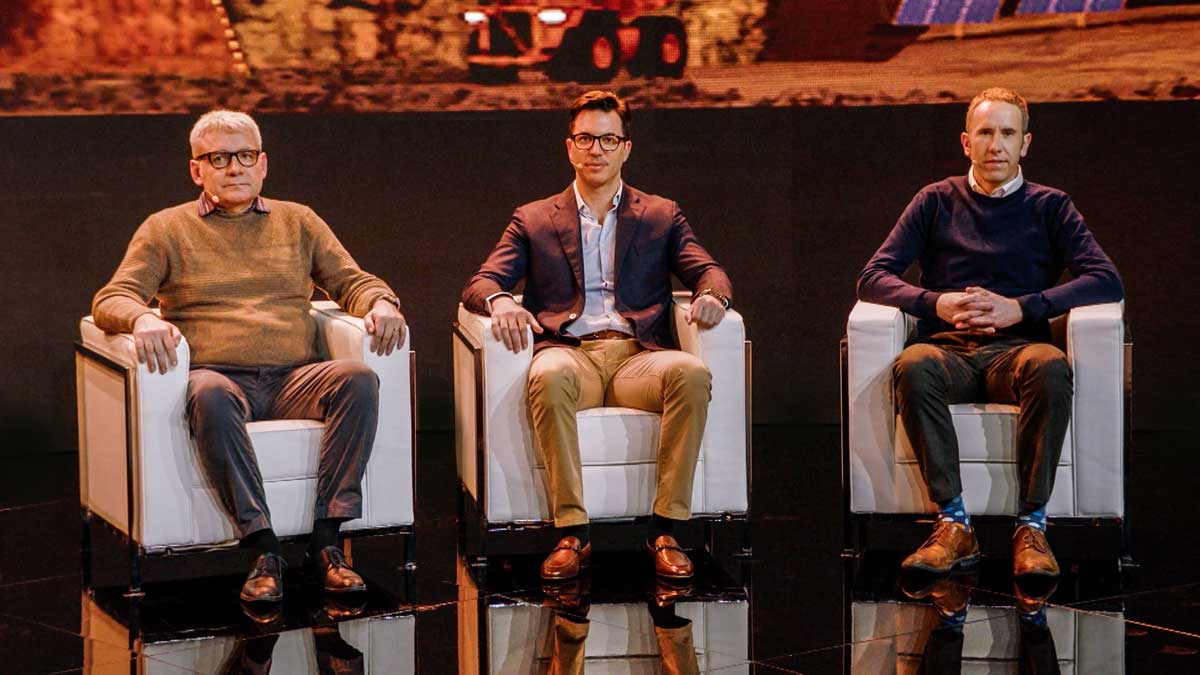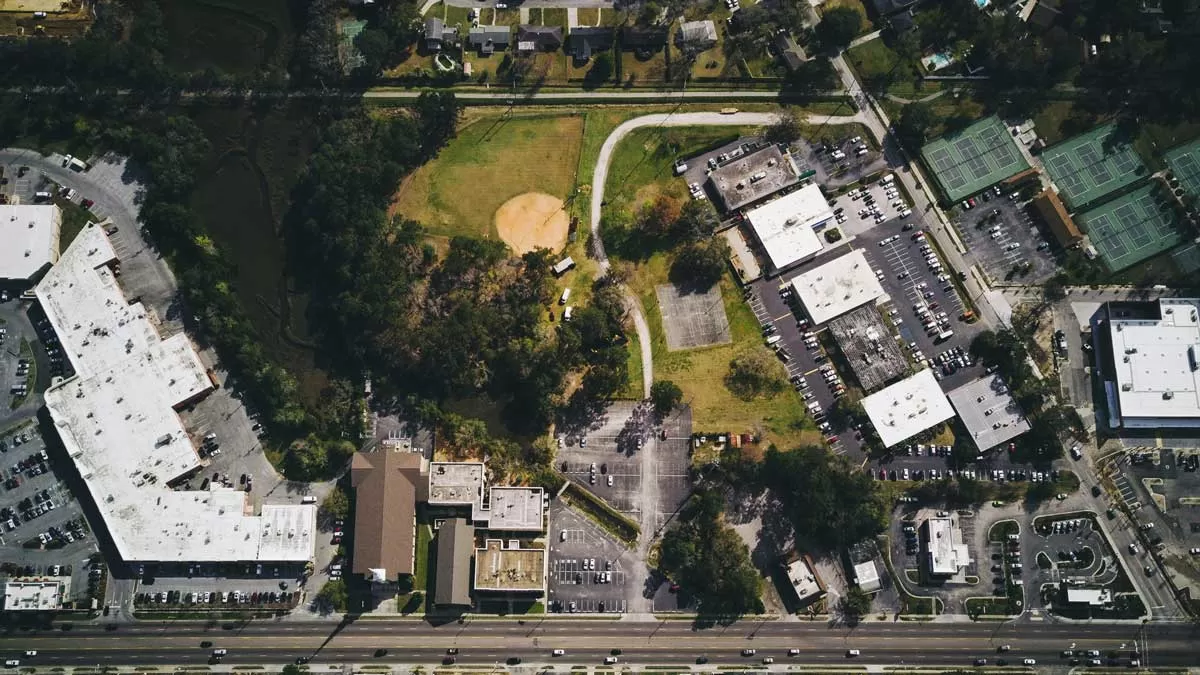BKT's journey through new technologies, which will make the OTR sector increasingly sustainable, continues. The first two episodes of Global Trends OTR, the Indian multinational´s talk show, addressed topics such as automation and robotics. This episode is about “Alternative Power, Electrification and Green Energy”. Alternative energies are, indeed, a fundamental lever in the process of change that the mining sector is going through.
As usual, there are three exceptional experts invited to the studio. This time, the guests are Paul Muller, Fellow of the Institution of Mechanical Engineers in London and Technical Sales Manager of Perkins Engines, one of the world's leading suppliers of diesel engines, which has been committed for years to the development of electric and low-energy-impact power-supply systems; Jonathan Cohen, Director of Product Commercialization for AutoStem Technology, a South African company that has been in the manufacture of non-explosive products to facilitate mining activities since 1997; and Piero Torassa, Field Engineer Manager of BKT Europe, who is in charge of testing tyres to evaluate their performance and quality.
Paul Muller opens the episode by speaking of the importance of electric power in the ecological transition process and how it can reduce the environmental impact in the OTR sector without compromising engine efficiency and performance. The expert talks, for instance, about the application of new, modular 300V-and-600V-electric battery systems on large equipment as well as 48V batteries on smaller machinery.
In the mining sector, the adoption of electrical systems is closely related to availability, or the potential adaptability to often inadequate existing infrastructure: “We see ourselves as part of the energy transition and play an important role in supporting a wide range of customers to help them achieve their goals” – points out Muller. “We want them to improve their efficiency, but also to reduce their environmental impact. One of the ways we do this is offering them electric solutions.”
According to Muller, the mining sector plays a key role in the vast decarbonization process. If implemented, the electrification of vehicles and infrastructures will lead to the reduction of emissions such as NOx, other particulates, and greenhouse gases. Nonetheless, Perkins’ Technical Sales Manager emphasizes that in some cases different solutions than electrification is required, suggesting in this regard the use of alternative fuels such as synthetic diesel, biodiesel, or HVO (Hydrotreated Vegetable Oil) - alternative fuels that would make it possible to combine the use of traditional internal combustion engines with the reduction of carbon emissions without involving investments in new equipment.
Hydrogen is another solution to be exploited in the energy transition process, although its use as a fuel currently includes some critical issues due to the more or less sustainable sources from which it is obtained: "It is a matter for a good debate. We cannot focus on a specific technology without taking into account its impact and the origin of the fuel that feeds it" - concludes Muller. “Mining is a key sector where electrification is and will be an important part of decarbonisation and energy transition. For sure, it will be necessary to learn a lot before adopting these technologies”.
The second guest, Jonathan Cohen, illustrates a new type of alternative energy in relation to the use of non-detonating explosives, particularly useful in the mining sector. This type of controlled explosion by means of the AutoStem Technology is based on deflagration, a subsonic combustion phenomenon, which occurs at a speed of about 300 m/s and is activated by a chemical reaction and a cartridge system: "We describe our technology as the world's first non-detonating blasting product. We don't even call it explosive”, Cohen points out. Thanks to our solution, consequences such as shock waves, rock crumbling, mineral pulverization, as well as damage to structures or tunnels near the explosion area can be avoided. This project has a large number of positive side effects in terms of sustainability: “In 30 years it will be the most employed technology. By avoiding the shock wave associated with conventional explosives and by eliminating some of the most harmful chemical components typically used in the production of conventional explosives, we avoid the creation of very fine dust particles that are a primary air pollutant as well as the generation of noxious gases. Our technology eliminates the possibility of land contamination that always occurs, to a greater or lesser extent, with the use of conventional explosive slurries.”
Another benefit of this innovative technology is its competitive advantage also from an economic viewpoint.
The last guest in the studio is Pietro Torassa, who explains how fundamental energy efficiency is within the OTR sector’s entire value chain. BKT Europe’s engineer actually highlights how the different levels of energy efficiency affect the rating of a product, a sign that innovation can go hand in hand with the introduction of alternative power in the production process.
“We use renewable energy in the production of our tyres,” underlines Torassa. “At the same time, however, we assess efficiency, load capacity, and so on. Normally, in the OTR sector, we talk of “star rating”, this is to say the ability of a tyre to carry the load. Fifteen years ago, we were one star, and now we are at three stars. To facilitate and accelerate the adoption of alternative energy sources, it is important to define the goal you want to achieve, understand the real use of your application, and hence cooperate with a partner, who is able to develop and integrate a solution to meet these requirements. Unclear objectives and the lack of understanding how the proposed solutions are actually employed can lead to developing products that don’t satisfy customer needs, discouraging their implementation.”
Global Trends OTR, is the web TV format created by BKT which will host until June international experts, operators and journalists on a monthly basis, to explore the current issues of the OTR market. Environmental sustainability and the implementation of measures to promote the energy transition will also be topics covered in the next episode of Global Trends, which can be viewed from 20 June.


















